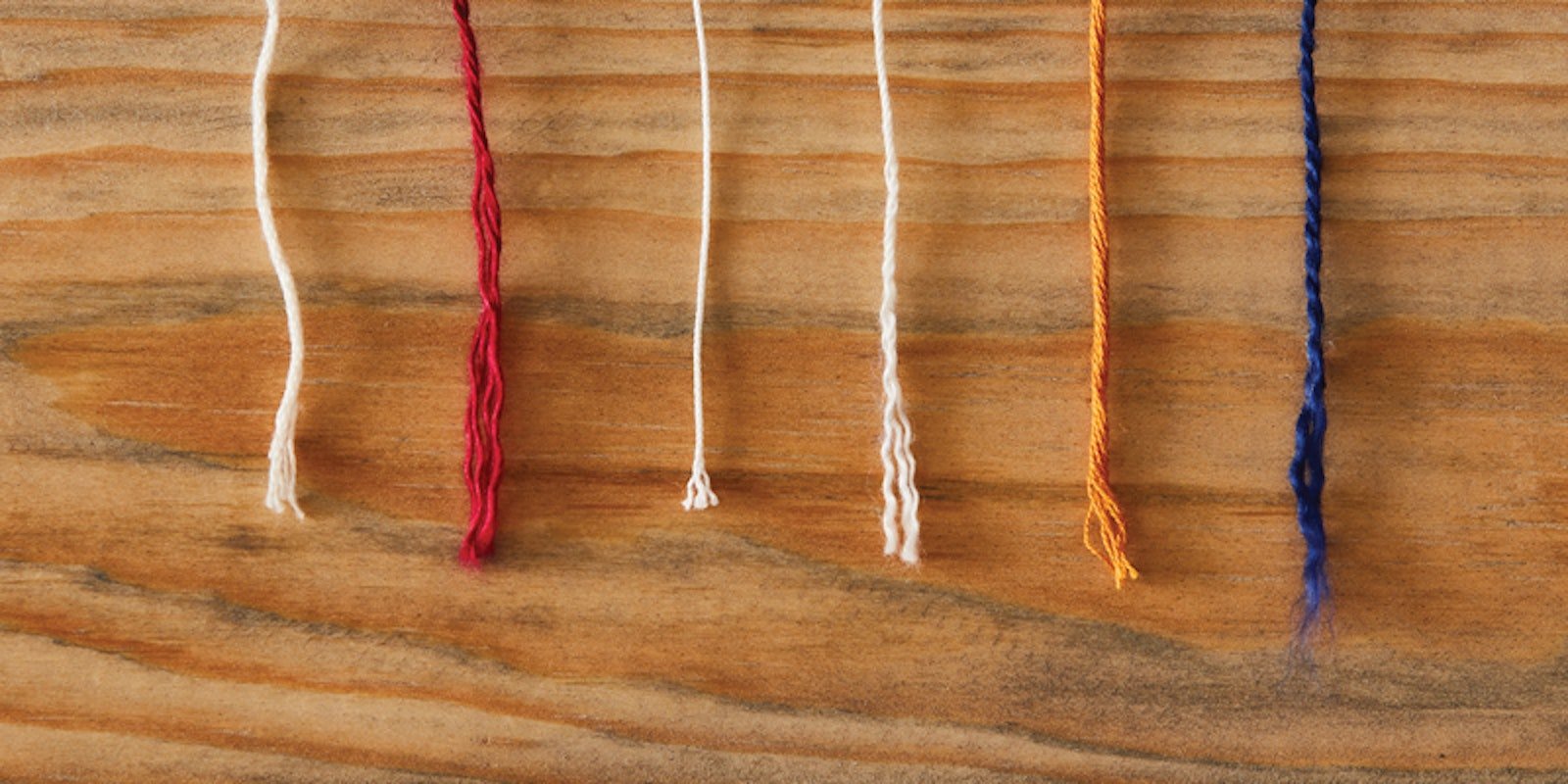Twist!
Cotton fiber is easy to pull apart (imagine a cotton ball), but plied yarn—yarn with two or more strands twisted together—can be difficult to break. One rule of thumb is that more layers of twist make yarn stronger. Cotton thread is typically made up of fine strands plied together. Crochet thread is hard to break by hand, but 8/2 weaving cotton (8 is the size of the ply and 2 is the number of plies) is about the same weight and snaps easily. Because cotton fibers are very short and fine, they require tight twist to hold together. To make thicker cotton crochet thread without pilling, manufacturers often combine more thin strands rather than simply making thicker strands.
Ply Structure
In most cases, twist applied in one direction is balanced with twist in the opposite direction by plying. This will be familiar if you’ve ever twisted fringe or made a twisted cord; the fringe stops twisting when it’s countered with opposite twist. The twist that keeps the fibers tucked in also keeps the plies together and makes them difficult to split with a crochet hook. Twist also tends to make yarn harder and stiffer.
In cabled yarns, there’s yet another layer of twist when plied yarns are essentially plied again in the opposite direction. This makes them very stable. Sometimes plied yarns can be twisted together in the same direction as plying, which makes them relatively easy to untwist.
After washing, dormant twist in the thread reveals itself. Some threads twist to the left and some to the right, and some twist more than others. From left, Omega Eulali, Scheepjes Catona, Handy Hands Lizbeth 10, Aunt Lydia’s Classic Crochet Size 10, DMC Natura Just Cotton, Circulo Anne.
Overtwist
Although cotton crochet threads may hang loose when you use them, many of them have twist that has gone to sleep. When you tie a length and dampen it, any extra twist wakes up again (as you can see in the photo above). That excess twist energy makes the yarn want to kink up when you’re using it—just as when you turn around and around on a swing, the twist energy wants to push you back in the other direction. Tightly twisted yarns make for great stitch definition.


